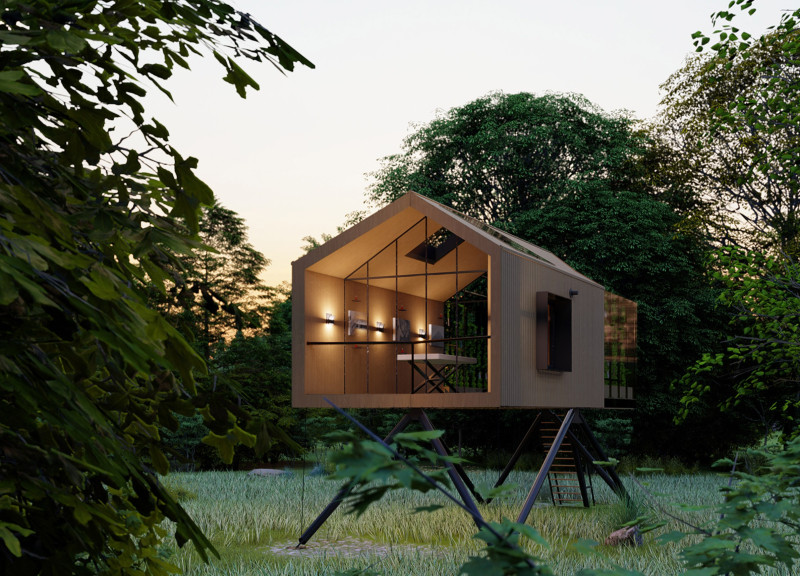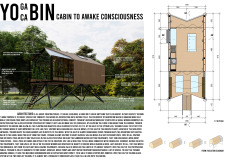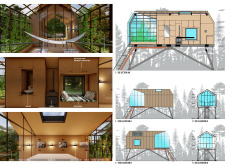5 key facts about this project
The project is an innovative architectural design situated in [Insert Geographical Location]. It functions as a [Insert Function, e.g., community center, residential building, commercial space], aimed at enhancing both the aesthetic and functional aspects of its environment. The architecture responds to the local context, taking cues from the surrounding landscape and urban fabric, demonstrating thoughtful integration into its setting. The design prioritizes sustainability and user experience, ensuring that it serves its purpose efficiently while promoting interaction among users.
The exterior façade of the building employs a combination of materials including concrete, glass, wood, and steel, which contribute to a cohesive design language. These materials not only enhance the visual impact but also facilitate durability and low maintenance. Large glass windows are strategically placed to optimize natural light and views, while wooden elements provide warmth and create a welcoming ambiance. The use of concrete for structural components ensures robustness and stability, integral for longevity.
Unique Design Approaches
One distinctive aspect of this architectural project is its emphasis on biophilic design principles. The integration of green spaces within and around the building promotes a connection to nature. Features such as green roofs, vertical gardens, and landscaped courtyards are employed to enhance both the aesthetic quality and environmental performance of the building. These elements contribute to improved air quality and provide recreational opportunities, making the space more enjoyable for inhabitants.
Additionally, the design incorporates passive energy efficiency strategies. Orientation of the building, shading devices, and high-performance materials work synergistically to minimize energy consumption and increase comfort. Such approaches underscore a commitment to sustainability, aligning with contemporary architectural practices that prioritize environmental responsibility.
Spatial Organization and Functionality
The layout of the project is carefully organized to facilitate movement and interaction among users. An open floor plan encourages seamless transitions between spaces, while dedicated areas for specific functions, such as meeting rooms and communal areas, are clearly defined. This organization supports collaboration and social engagement, essential for the intended use of the building.
Architectural sections and plans reveal how circulation is designed to maximize accessibility while ensuring privacy where needed. The vertical circulation includes [insert specifics such as staircases or elevators], which are integrated into the design to enhance connectivity without disrupting the overall flow. Attention to detail in the design of these spaces showcases a commitment to user experience and practicality.
For further details about the architectural plans, sections, and designs that contribute to the innovative solutions presented in this project, readers are encouraged to explore the project presentation. This comprehensive overview will provide deeper insights into the architectural ideas and concepts that define the character of this design.





















































